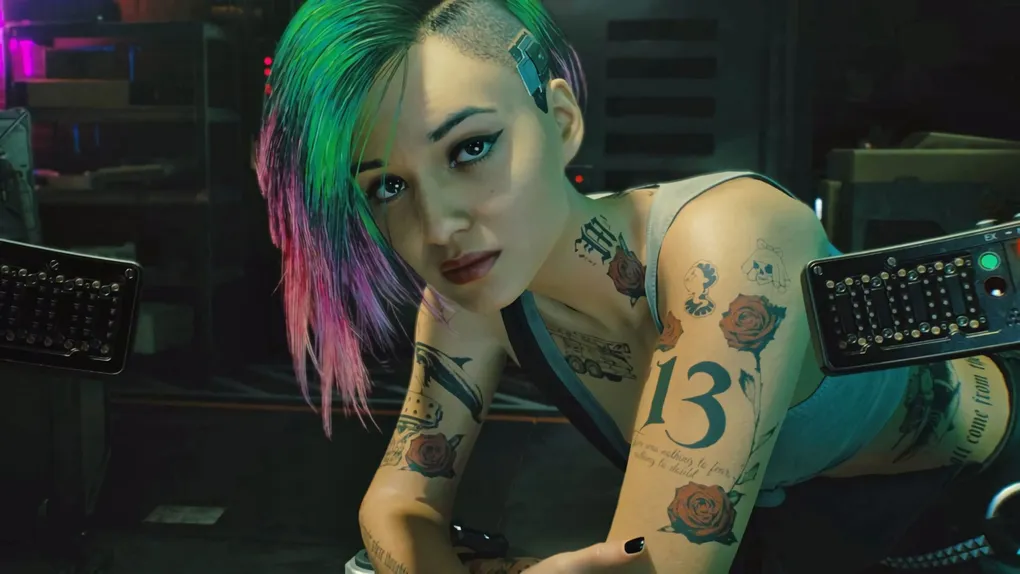
When you realize how a game works
Spoiler warning: The following contains story-related information from Cyberpunk 2077.
First, I would like to explain my hook for this post: I have been playing Cyberpunk quite a lot over the last few weeks. I reached the maximum level, “worked my way through” the open world, and then devoted myself entirely to the game’s much-praised side quests. I mainly followed four major side quest lines, each of which revolves around a character and their problems. I completed one of them as quickly as possible (i.e., before I “worked my way through” the open world), and the rest afterwards. I was still relatively enthusiastic about the first quest line, but with each subsequent one, my emotional attachment diminished, which ultimately resulted in me finishing the game before the end of one quest line and not really feeling like continuing to play. In my opinion, this is because I subconsciously recognized the purpose of “characters” in the game.
I would like to illustrate this with the first quest line involving Judy from Cyberpunk 2077. You meet her during the main quest, and later on, a more or less extensive side quest unfolds around Clouds, a special brothel in Night City. Even during the actual side quest, which involves freeing Clouds from its owners and taking it over, there are minor hints that a romance with Judy could develop. For example, V gets the key to Judy’s apartment, where there are a few lines of dialogue about love and Judy’s motivations to discover. Compared to most other characters, this is striking, as most NPCs refer exclusively to themselves (or other NPCs) in their dialogues. So, as a trained gamer, you expect that a romance could develop from this.
For me, Judy was one of the more interesting characters. Her desire for change, her dissatisfaction with Night City, her commitment to helping exploited prostitutes – all of this comes across as human and relatable. But the longer you play, the more you realize that the romance never materializes. At some point, the actual quest series around the Clouds is completed and you ask yourself, “Is that it?” After a while, however, you receive a text message from Judy asking you to meet her at a reservoir. As a Night City connoisseur, the setting immediately catches your eye. It’s quiet and away from the actual city. At the latest when you jump into the diving suits with Judy and she wants to “show V something,” it becomes clear that this is not a “shoot everything up quest.”
The quest is really beautiful, touching in some moments, and actually a lot of fun to play. Actually. Because it doesn’t fit in with the rest of the game at all, not even with the rest of the quest line. As a player, you realize relatively quickly: “Aha, so this is a romance quest.” You look forward to seeing how it develops, what will happen, how it will influence the overall plot, and much more. But then somehow it all happens very quickly. A touch on the cheek at the edge of the bathtub leads to a fling in bed, two minutes later V falls asleep with Judy, followed by a short conversation in the morning in which Judy explains that she won’t be leaving town because of us, and that’s it.
Really.
No follow-up quest, no development of the relationship, no influence on the further plot, nothing. And the worst part is: it’s the same with all the side characters. Whether it’s Panam, Kerry, or River (the characters from the other major quest lines mentioned).
And that’s such a shame. Characters who are supposed to be perceived as human beings, but at the end of the day follow game mechanics so clearly that we as players can’t help but notice. The characters and the story we experience serve the gameplay. It almost seems as if the task was:
Hey, we need a romance, you can do 5 quests for it, but at least 80% of it has to be open world gameplay.
I’ve now finished the game, and at the end there was another 3-minute dialogue with Judy, whom you could easily have forgotten by this point (“oh, I had a romance 15 hours ago?”). And I’m afraid I have to stick to my opinion that the game built its gameplay at the expense of its story. First there was the world, then the gameplay, and finally the question, “Hey, how do we actually fill the world?” Maybe this works for a lot of people, and I’m happy for them.
But these games don’t really excite me anymore. What remains is disappointment.